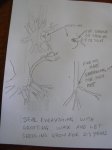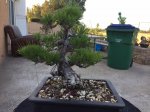I have done it a couple of times. You need the right seedling, the correct tool - it must be about 1mm or less in diameter wider than the part of the seedling to be used. It should ''just fit in if pushed a bit. not too loose or not so tight that you end up mangling the bark of the seedling. (This part is the most important of the whole operation), and some grafting wax. (not Japanese sealer)
A bit from a milling machine works well. Something parallel which cuts on it's side. Make the groove so the seedling fits in completely. The work must be very neat or it won't work. As it grows it will have no option but to unite with the tree.
Lightly scrape the bark of the seedling until you see green (this is not essential)
You will need to partly bare root the tree to do this. You need to totally seal every exposed cut surface - from underneath as well as from above. This is vital or the tree may heal itself before there is a union. Even so, the pressure from the expanding seedling should eventually force a union.
If done correctly, the seedling will not move when it is inserted into the groove. If it does, the groove is to wide or the seedling is too thin. Find a new seedling (have a few on standby)
Let the seedling grow without pruning for a couple of years. If it's in the way you can wire it down but don't prune it.
When you are reasonably sure it has united with the trunk, you can progressively start to reduce the seedling foliage until you finally remove it 1 or 2 years later. The seedling should be about pencil thickness.
You can do as many on these grafts as you like at the same time.




